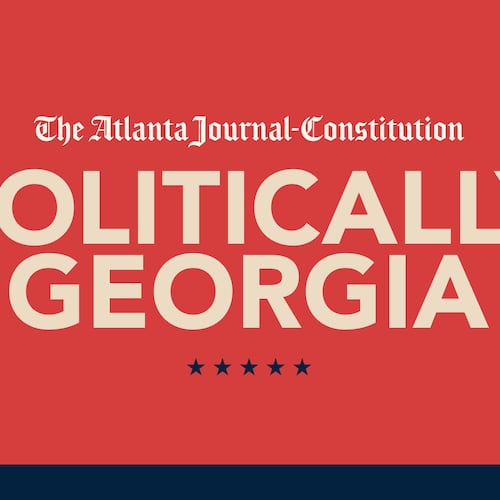Georgia officials could soon face a difficult math problem.
More than 300,000 students are likely eligible for a new voucher program, an analysis by The Atlanta Journal-Constitution found. That’s more than 15 times the number of students for which the state budgeted.
The Georgia Legislature approved the “Georgia Promise Scholarship Act” earlier this year. It allows children who live in the attendance zone of a public school performing in the bottom 25% on state measures to apply for scholarships of $6,500 a year to use on education expenses, like private school tuition and tutoring.
Funding was capped at 1% of the public education budget in Georgia. That was an estimated $140 million annually when the law was passed, or enough to provide scholarships to about 21,000 students.
Administrators at the Georgia Student Finance Commission, which is overseeing the program, are waiting for the first glimpse of Gov. Brian Kemp’s budget for the next fiscal year. That’s when they’ll know whether the budget sets aside the maximum allowed and how much that is, or whether it allocates less.
The program will begin in fall 2025 and last at least a decade.
The list of eligible schools was recently released, though it has since been taken down as state officials are “validating additional data to ensure accuracy.” Roughly 340,000 students attend the more than 500 schools on the original version of the list — far more than the scholarship will be able to fund, based on the estimates. Joy Hawkins, executive director of the Governor’s Office of Student Achievement, said Friday that the list will “be posted at a later date in the new year.”
In DeKalb County alone, the state’s third-largest school system and the district with the most schools on the list, roughly 35,000 students could qualify for the program under the original list.
Put another way, if the state wanted to give the scholarships to each of those 340,000 students across Georgia, that would cost more than $2 billion. But that wasn’t part of the plan, said state Sen. Greg Dolezal, R-Cumming, who sponsored the bill.
“It was never envisioned, obviously, that every eligible student would be taking advantage of it,” he said in an interview with The Atlanta Journal-Constitution. “Over time, I would expect the demand for the program to grow.”
Credit: NATRICE MILLER
Credit: NATRICE MILLER
An Associated Press analysis found that the number of students eligible for the scholarship could top 400,000. That is because, based on the language of the law, students who live in the same zone as one of the lowest-performing 25% of schools would be eligible to apply for vouchers even if they do not attend that school.
The application won’t open until early 2025. Funding won’t be distributed until after July 1.
Georgia has two other voucher programs. One for students with special needs began in 2007 with 899 student recipients, a number that has steadily increased over the years to almost 5,900 in 2022. The other program, which allows people and companies to direct their taxes toward private school scholarships, was originally capped at $50 million a year in 2008. Lawmakers increased the cap multiple times to its current $120 million.
When the bill was first introduced, Dolezal said, there was no cap on the scholarships. It was added by opponents of the bill.
But with the cap being a percentage of overall funding, Dolezal expects the money to increase annually with overall education funding. Whether lawmakers would be interested in raising the cap would depend on demand, he said.
So for now, it’s a waiting game.
“We really do not know” how many students are going to apply, said Lynne Riley, president of the Georgia Student Finance Commission. “We think there’s going to be an appetite.”
In this first year of the program, families earning less than 400% of the federal poverty level, or about $125,000 for a family of four, are first in line for the scholarship. If the number of applications exceeds the funds available, students will be selected randomly and from that group first.
Of the 340,000 eligible students, roughly 70% of them qualify for programs like Supplemental Nutrition Assistance Program benefits or Medicaid or are homeless, according to state data.
Credit: Arvin Temkar/AJC
Credit: Arvin Temkar/AJC
State Sen. Jason Esteves, D-Atlanta, opposed the bill. He expects few families will enroll in the program.
“A lot of these parents are not going to be able to afford (private school) tuition,” he said. “On top of the (scholarship) they’re going to need financial aid or find a private school that only charges $6,500 a (year).”
The average annual private school tuition in Georgia is $11,963, according to one estimate. In metro Atlanta, tuition at some private schools costs more than $30,000 a year.
Esteves, a former Atlanta school board chair, said the problems that exist in public education won’t be solved by diverting money to private schools.
“While I appreciate the efforts to provide students with opportunities, we should be doing what we can to invest in opportunities that are for as many students as possible and … the best way to do that is by (investing in) our public school system,” he said.
Data journalist Jennifer Peebles and columnist Maureen Downey contributed to this report.
Keep Reading
The Latest
Featured



